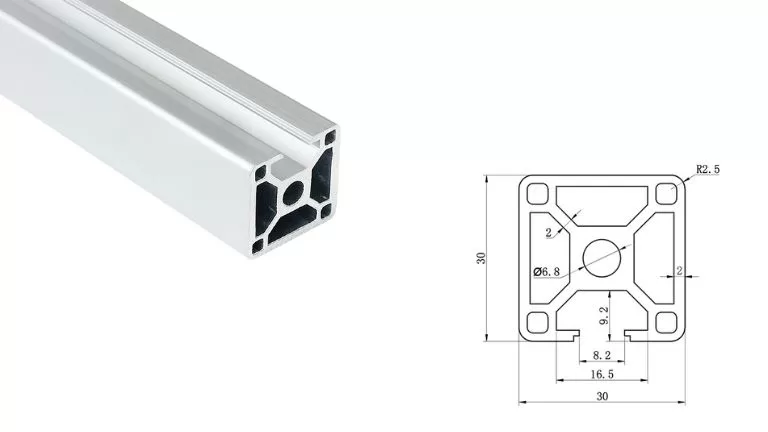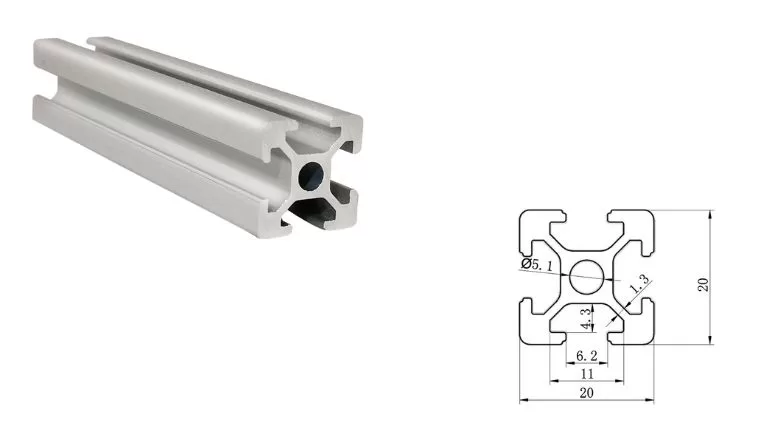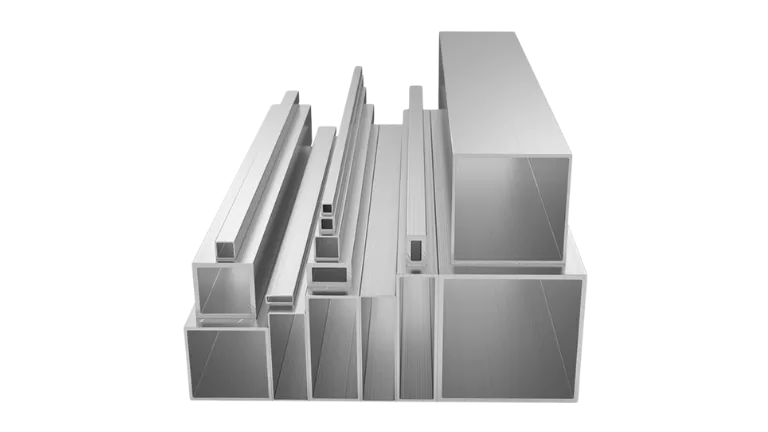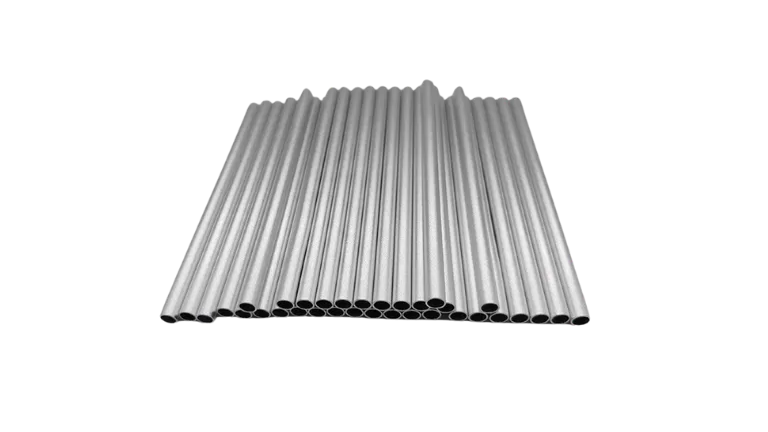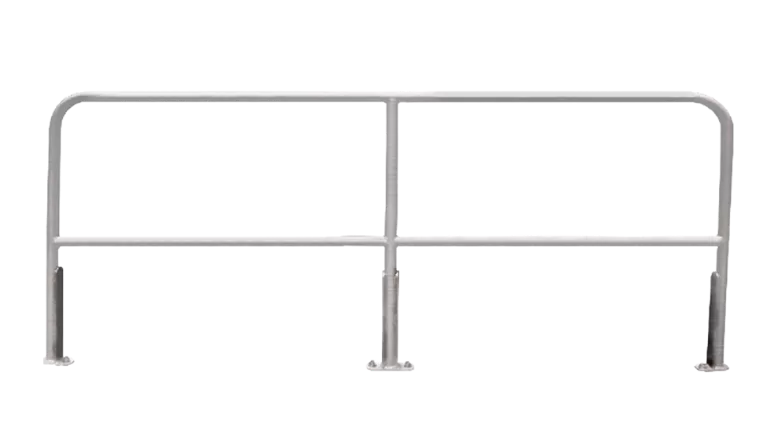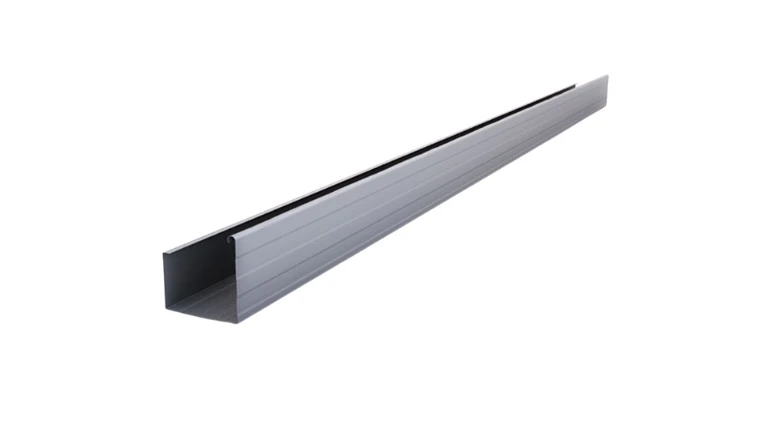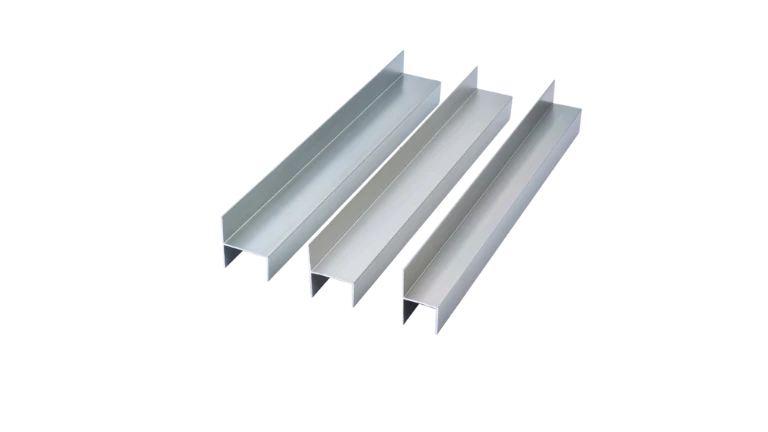Custom Conductive Aluminum Tubular Busbar
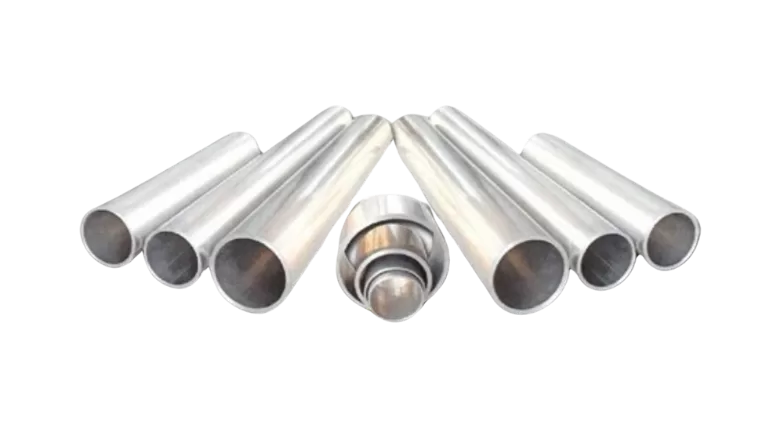
An aluminum tubular busbar is a highly efficient tube-shaped extruded aluminum profile, specially designed for power transmission and distribution systems. It is typically made from 6101 aluminum alloy, which offers an excellent balance of conductivity and mechanical strength. This product is widely used in substations, industrial power distribution, and new energy power generation. Its core advantages lie in its high current carrying capacity, lightweight design, corrosion resistance, and flexible installation options.
Aluminum tubular busbars can be customized in size and surface treatment to meet different project requirements. Their hollow structure also provides superior heat dissipation, making them ideal for high-current applications.
Spot Specifications
| No. | Outer Diameter (mm) | Wall Thickness (mm) | No. | Outer Diameter (mm) | Wall Thickness (mm) | No. | Outer Diameter (mm) | Wall Thickness (mm) |
|---|---|---|---|---|---|---|---|---|
| 1 | 300 | 10 | 28 | 131.5 | 5.5 | 55 | 27 | 10 |
| 2 | 250 | 10 | 29 | 171 | 8 | 56 | 84 | 8 |
| 3 | 200 | 10 | 30 | 130 | 10 | 57 | 53 | 2 |
| 4 | 200 | 8 | 31 | 120 | 5 | 58 | 70 | 8 |
| 5 | 170 | 8 | 32 | 60 | 6 | 59 | 100 | 8 |
| 6 | 150 | 7 | 33 | 90 | 7.7 | 60 | 168.3 | 10.9 |
| 7 | 130 | 7 | 34 | 155 | 8.6 | 61 | 88.9 | 7.62 |
| 8 | 110 | 5 | 35 | 157 | 7 | 62 | 40 | 8 |
| 9 | 101 | 5 | 36 | 140 | 10 | 63 | 72 | 16 |
| 10 | 80 | 4 | 37 | 21 | 7 | 64 | 95 | 8 |
| 11 | 115 | 7 | 38 | 38 | 1.5 | 65 | 65 | 16.75 |
| 12 | 229 | 10 | 39 | 80 | 13.25 | 66 | 111 | 4 |
| 13 | 60 | 6 | 40 | 60 | 12 | 67 | 12 | 3.5 |
| 14 | 100 | 10 | 41 | 72 | 15.75 | 68 | 73 | 1.45 |
| 15 | 101 | 2 | 42 | 60 | 2.5 | 69 | 77 | 23.5 |
| 16 | 183 | 8 | 43 | 120 | 4 | 70 | 128 | 30 |
| 17 | 89 | 5 | 44 | 24.8 | 0.8 | 71 | 120 | 15 |
| 18 | 173 | 10 | 45 | 60 | 3 | 72 | 250 | 7 |
| 19 | 153 | 8 | 46 | 45 | 8.25 | 73 | 49.2 | 2.1 |
| 20 | 135 | 7 | 47 | 71 | 6 | 74 | 50 | 10 |
| 21 | 109 | 5 | 48 | 70 | 3 | 75 | 168.3 | 7.11 |
| 22 | 110 | 7 | 49 | 100 | 8 | 76 | 141.3 | 6.35 |
| 23 | 204 | 4 | 50 | 52 | 10.25 | 77 | 88.9 | 6.35 |
| 24 | 250 | 13 | 51 | 120 | 10 | 78 | 37.5 | 5 |
| 25 | 264 | 15 | 52 | 81 | 12.25 | 79 | 32 | 2.5 |
| 26 | 184.5 | 2.5 | 53 | 80 | 5 | 80 | 26.3 | 3.65 |
| 27 | 103.5 | 5 | 54 | 55 | 2.5 | 81 | 130 | 15 |
Custom Aluminum Tubular Busbar
We specialize in custom aluminum tubular busbars, using high-quality aluminum alloys and advanced large-tonnage aluminum extrusion presses to produce thick-walled tubes. With large aging furnaces, we can manufacture busbars up to 8 meters in length, ensuring excellent conductivity, high mechanical strength, and outstanding corrosion resistance. Our products are widely used in power transmission and distribution systems, switchgear, renewable energy, and industrial equipment. Key advantages include lightweight structure, efficient heat dissipation, and easy installation. With extensive manufacturing experience and strict quality control, we provide the electrical industry with reliable and high-performance tubular busbar solutions.

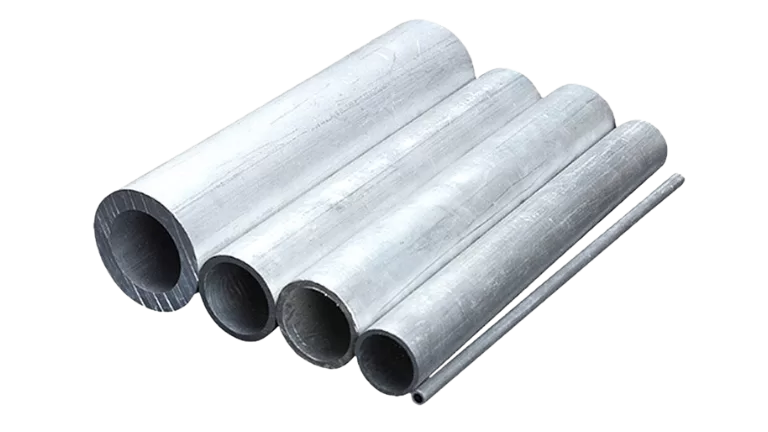
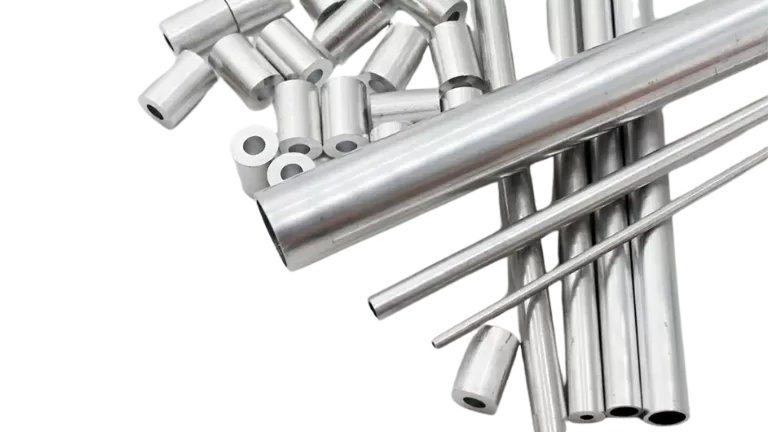
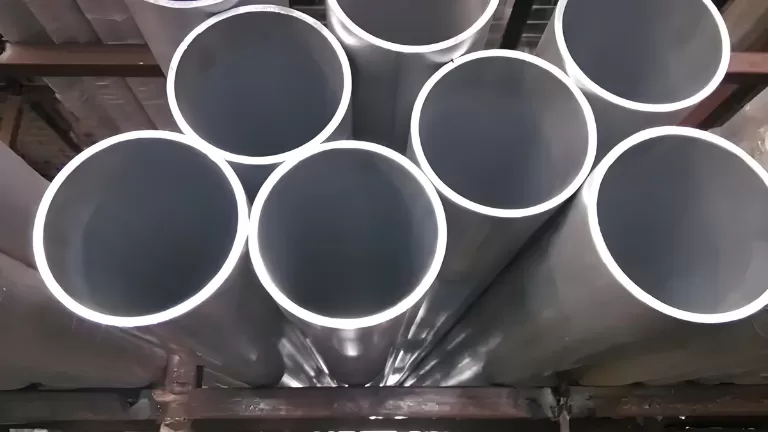
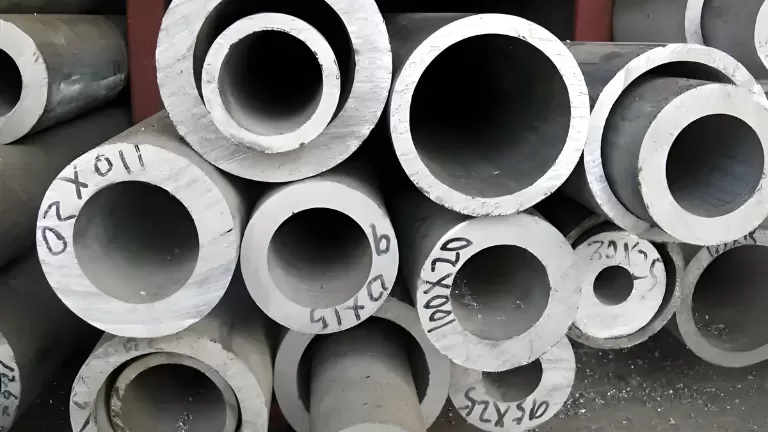
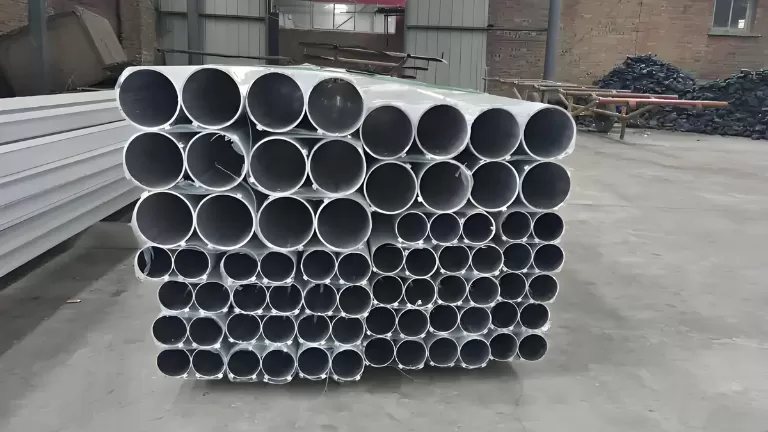
Custom Specifications
| Item | Specification | Remarks |
|---|---|---|
| Outer Diameter (OD) | 30 mm~250 mm | Customizable for required current |
| Wall Thickness (WT) | 2 mm~15 mm | Selectable based on strength and conductivity requirements |
| Length | 6 m~12 m (longer sizes customizable) | |
| Material | 6063, 6101, 1060 | 6063: Strong for small/medium sizes 6101: Good conductivity and strength 1060: Very high electrical conductivity |
| Electrical Conductivity | >/=61% IACS (1060 alloy) | For high current applications |
Aluminum Tubular Busbar – 6101 Alloy
We manufacture aluminum tubular busbars using 6101 alloy, which is well known for its high electrical conductivity (≥ 56% IACS) and excellent mechanical strength. Typical tensile strength ranges from 130 to 160 MPa, with a yield strength of 60–120 MPa, making it suitable for power transmission and distribution systems where higher current-carrying capacity and mechanical durability are required. 6101 busbars can be customized with different sizes, drilling, cutting, welding, and also support surface treatments to fit various project needs.
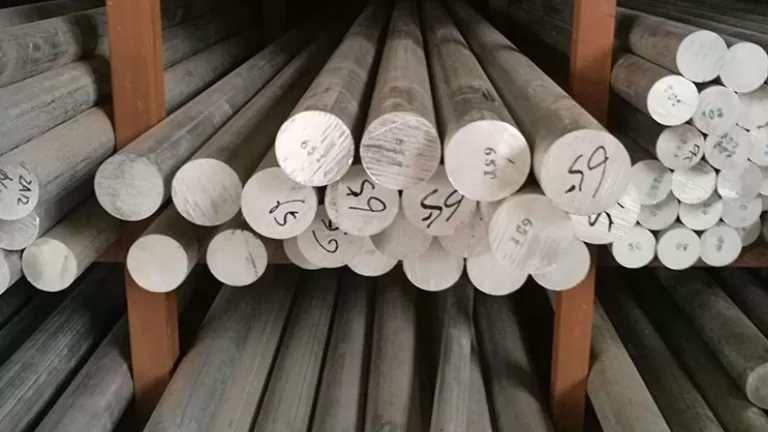
Aluminum Tubular Busbar – 6063 Alloy
Busbars made from 6063 alloy provide good electrical conductivity (≥ 53% IACS), strong corrosion resistance, and an exceptional surface finish. The typical tensile strength is 120–150 MPa, with a yield strength of 55–110 MPa. 6063 alloy is favored for projects needing precise and complex extrusions as well as a good appearance. These busbars are lightweight, easy to process (including bending and anodizing), and widely used in switchgear, bus ducts, and renewable energy applications.
Comparison of Key Materials and Properties
| Property | 6101 Alloy | 6063 Alloy |
|---|---|---|
| Conductivity (IACS) | >/= 56% | >/= 53% |
| Tensile Strength (MPa) | 130-160 | 120-150 |
| Yield Strength (MPa) | 60-120 | 55-110 |
| Typical Applications | High-current transmission, power distribution, heavy-duty equipment | Precision extrusion, aesthetic requirements, corrosion-resistant environments |
| Advantages | Higher conductivity, superior mechanical strength | Excellent surface finish, superior workability |
Applications of Aluminum Tubular Busbar
Aluminum tubular busbars are widely used in the following areas:
1. Power Transmission and Distribution:
Employed as main conductors in substations, switchgear, and distribution cabinets for efficient power delivery.
2. Renewable Energy Systems:
Used in solar, wind, and energy storage systems due to their light weight and corrosion resistance.
3. Industrial Equipment:
Suitable for large motors, transformers, and automation equipment, providing reliable power connections.
4. Public Infrastructure:
Applied in rail transit and bus duct systems for safe and stable electricity distribution.
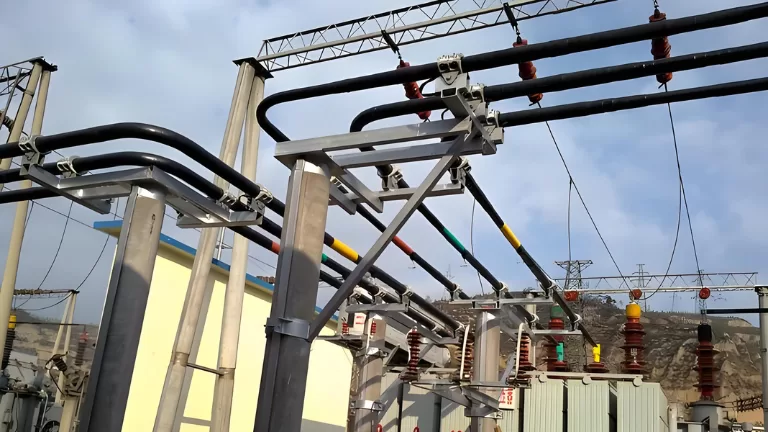
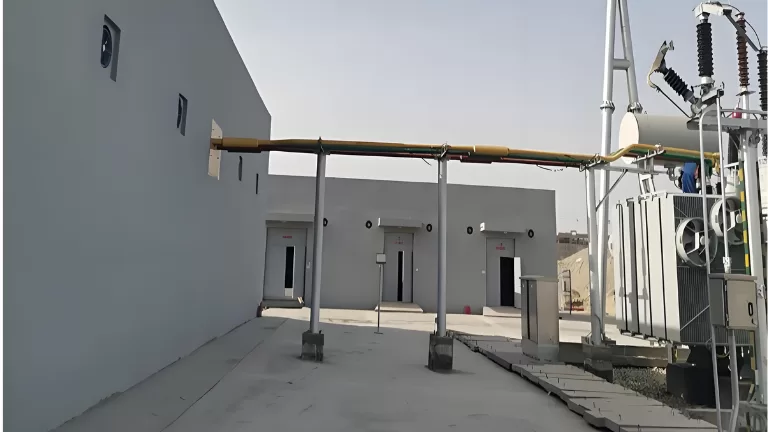

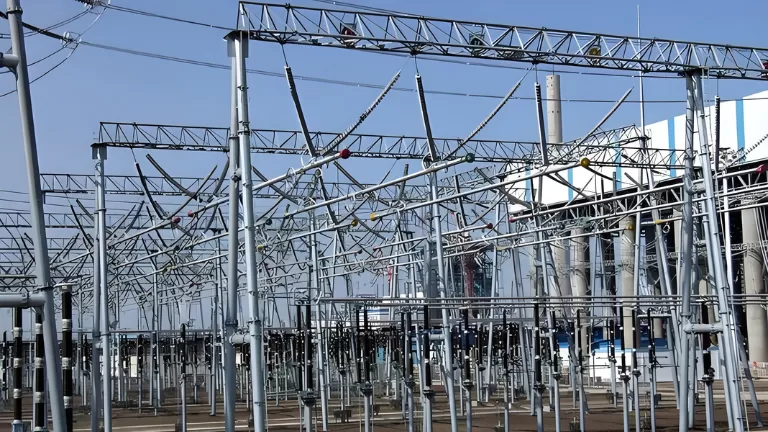
Key Features & Distinct Advantages
1. Ultra-lightweight:
The hollow structure, combined with low-density aluminum alloy, makes tubular busbars exceptionally easy to transport and install—even in complex power layouts.
2. Excellent Electrical Performance:
High-grade alloys and professional extrusion ensure consistent conductivity and current-carrying capacity, suitable for medium to high-voltage systems.
3. Superior Heat Dissipation:
Increased surface area and airflow around the tube enable faster cooling, improving system safety and longevity.
4. Design Flexibility:
Tube diameter, wall thickness, length, punching, and slotting are fully customizable; perfectly tailored for your wiring and mounting needs.
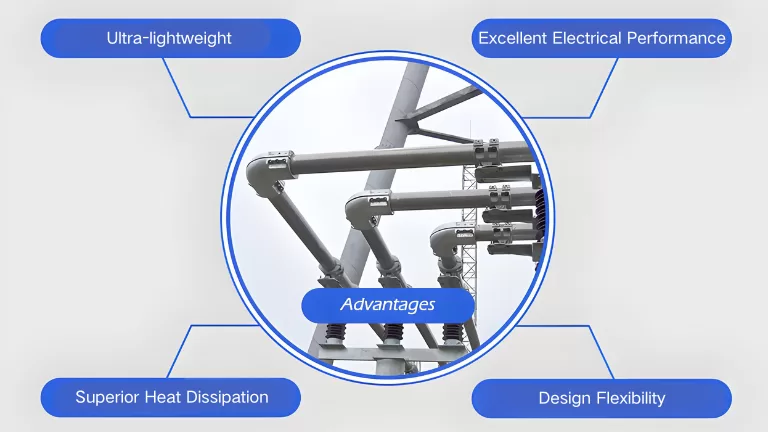
Comparison Between Aluminum Tubular Busbar and Copper Tubular Busbar
| Property | Aluminum Tubular Busbar | Copper Tubular Busbar |
|---|---|---|
| Material | Aluminum Alloy (e.g., 6101, 6063) | Copper (e.g., T2, C1100) |
| Conductivity (IACS) | 53-56% | 97-100% |
| Density (g/cm3) | ~2.7 | ~8.9 |
| Weight | Lighter (about 30% of copper) | Heavier |
| Mechanical Strength | Good | Excellent |
| Corrosion Resistance | Good (especially with surface treatment) | Moderate (may require surface plating) |
| Current Carrying Capacity | Lower at the same cross-section | Higher at the same cross-section |
| Cost | Lower | Higher |
| Installation | Easier to handle and install | More labor-intensive due to weight |
| Surface Oxidation | Forms protective oxide layer | Oxidation can increase resistance |
| Thermal Expansion | Higher | Lower |
| Applications | Power substations, switchgear, renewables, industry | High-reliability or compact electrical systems, heavy industry |
Aluminum Tubular Busbar Processing Capabilities
As a leading manufacturer of aluminum tubular busbars in China, we are dedicated to supplying high-quality solutions for various electrical and industrial applications. Our expertise encompasses custom design and precision manufacturing of tubular busbars, ensuring that each product meets the specific technical and dimensional requirements of our clients. From sourcing premium raw materials to state-of-the-art extrusion, surface treatment, and advanced fabrication processes, our fully integrated production system guarantees consistent quality and reliable performance. We pride ourselves on delivering aluminum tubular busbars that comply with stringent industry standards and support the unique demands of every project.
 Our production facility houses over 40 advanced extrusion lines, including a 6000-ton press, enabling us to produce standard and custom aluminum tubular busbars in a wide range of sizes and specifications. This robust capability allows us to meet the needs of power transmission, substations, switchgear, and industrial electrical systems, while ensuring precise, high-quality solutions tailored for sectors such as energy, infrastructure, and heavy industry.
Our production facility houses over 40 advanced extrusion lines, including a 6000-ton press, enabling us to produce standard and custom aluminum tubular busbars in a wide range of sizes and specifications. This robust capability allows us to meet the needs of power transmission, substations, switchgear, and industrial electrical systems, while ensuring precise, high-quality solutions tailored for sectors such as energy, infrastructure, and heavy industry.
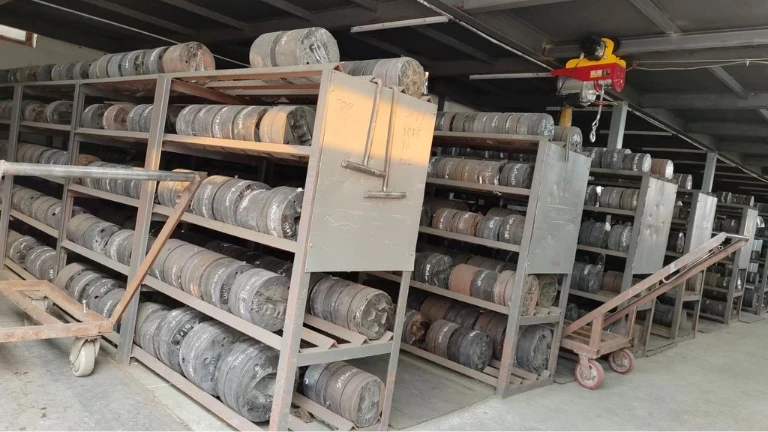 We have the expertise to design and manufacture extrusion molds for aluminum tubular busbars in-house, ensuring both precision and efficiency in our production process. Our experienced team collaborates closely with clients to develop custom molds from drawings or samples, guaranteeing that each busbar meets their unique requirements. The mold production process typically takes about 7 days, after which we provide samples for client approval before moving on to full-scale manufacturing.
We have the expertise to design and manufacture extrusion molds for aluminum tubular busbars in-house, ensuring both precision and efficiency in our production process. Our experienced team collaborates closely with clients to develop custom molds from drawings or samples, guaranteeing that each busbar meets their unique requirements. The mold production process typically takes about 7 days, after which we provide samples for client approval before moving on to full-scale manufacturing.
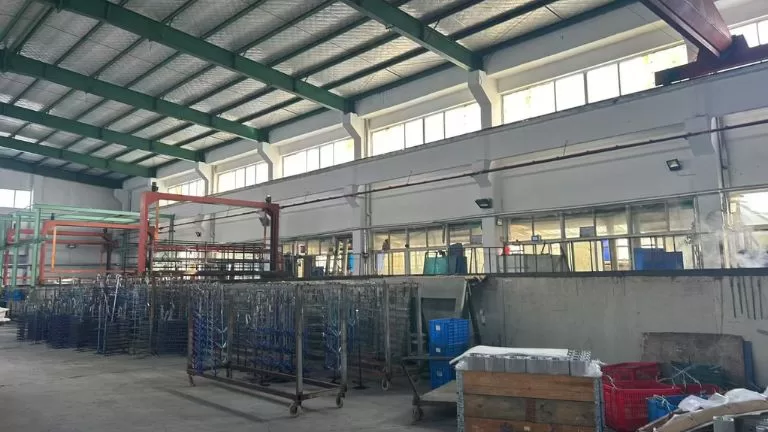
To enhance both durability and appearance, we offer a variety of surface treatments for aluminum tubular busbars. Options include anodizing for improved corrosion resistance, powder coating for colorful, protective finishes, fluorocarbon coating for excellent weather resistance, and wood grain transfer for a refined, natural look. These treatments can be customized according to your project’s functional and aesthetic requirements, ensuring that our aluminum tubular busbars are both high-performing and visually appealing.

To deliver comprehensive solutions for aluminum tubular busbars, we offer a wide range of further processing services. These include CNC machining, milling, threading, drilling, precision cutting, punching, welding, and assembly. With these fabrication options, we can supply finished busbars precisely tailored to your project’s specifications, providing maximum flexibility and dependable quality to our customers.
RFQ of Extruded Aluminum Profile
When choosing bus conductors, several key aspects should be evaluated. Consider the nature of the electrical current, the required ampacity, system frequency, and the operating voltage. It’s also essential to assess permissible voltage drop, potential short-circuit levels, and the physical space available for installation. The number and type of taps and connections must be planned to ensure reliable operation. For installations handling large currents, prioritizing appropriate current density is vital. Outdoor substations require special attention to environmental and weather-related factors. In industrial settings, careful analysis of allowable temperature rise, load capacity, and energy losses will ensure safe and efficient system performance.
The choice between aluminum tubular busbars and copper bars depends on your specific project requirements. Aluminum tubular busbars are lightweight, cost-effective, and easy to install. With proper design and surface treatment, they offer good conductivity and corrosion resistance, making them ideal for long spans, high-current transmission, and budget-sensitive projects. Copper bars provide higher conductivity and are better suited for spaces with limited room or extremely high current density needs. Overall, aluminum tubular busbars are increasingly popular in modern applications due to their excellent balance of performance and cost.
The heat treatment of aluminum extrusions determines their mechanical properties, strength, and suitability for specific applications. Among the various heat treatment methods, T5, T6, and T66 are the most commonly used. Here’s an in-depth look:
| Heat Treatment State | Cooling Method | Strength | Key Features and Benefits | Applications |
|---|---|---|---|---|
| T5 | Air cooling (fan) | Moderate | Adequate strength, good dimensional stability, used for architectural purposes. | Windows, doors, curtain walls, building structures. |
| T6 | Water quenching (fast) | High | Higher strength and hardness, ideal for industrial and structural uses. | Automotive, aerospace, machinery, transport parts. |
| T66 | Water quenching (fast) | Very high | Optimized mechanical properties for higher strength and performance demands. | Automotive, rail transportation, high-end machinery. |
Other Heat Treatment States
- T4: Solution heat-treated and naturally aged. Used in applications requiring intermediate strength and enhanced formability.
- T7: Overaged for better stress-corrosion resistance, often used for aerospace and marine purposes.
- O (Annealed): Very soft condition suitable for extensive forming or bending requirements.
- F (As-Fabricated): No heat treatment applied, used in non-critical applications with low strength requirements.
. Anodizing (Oxidation)
- Common Colors:
Natural silver
Black
Champagne
Light bronze
Dark bronze
Gold
2. Electrophoresis Coating (E-Coating)
- Common Colors:
Black
Champagne
Light bronze
Dark bronze
Custom metallic colors
3. Powder Coating
- Colors:
Can match any color based on the RAL color chart.
Offers textures like matte, gloss, satin, and custom finishes.
4. PVDF Coating (Polyvinylidene Fluoride)
- Colors:
Also customizable using the RAL color chart.
High-end finishes with matte or glossy effects.
5. Wood Grain Transfer Printing
- Colors and Patterns:
Mimics various wood types (e.g., oak, walnut, teak, mahogany).
Custom patterns available based on provided samples.
6. Film Lamination
- Colors and Patterns:
Includes textures like marble, leather, and solid colors.
Custom finishes and patterns based on provided samples.
Pre-Treatment Options (Impact on Final Color)
- Brushing/Polishing: Produces smooth or reflective metallic surfaces.
- Sandblasting: Adds a rough, matte texture before the final surface treatment.
Mold fees are an essential part of the custom aluminum extrusion process. Since every order requires a uniquely designed mold tailored to specific requirements, these molds cannot be used for other products. Therefore, the mold fee is necessary and non-negotiable.
We require 100% upfront payment of the mold fee before mold development begins to ensure timely production. However, as a token of appreciation for your support, we offer a refund of the mold fee or equivalent discounts once the order reaches a certain production volume. Specific policies can be discussed based on your order volume and collaboration details.
Our minimum order quantity (MOQ) varies depending on the size of the product. For smaller-sized products, the MOQ is typically 500kg, while for larger-sized products, it is 2 tons.
We will specify the exact MOQ requirements during the quotation process. If your order quantity does not meet the MOQ, we can still arrange production, but an additional fee will be applied to cover mold preheating and production setup time. Rest assured, this extra fee will be reasonable, and we aim to keep it as minimal as possible to ensure smooth cooperation.
Packaging can be customized according to your needs. Options include using protective film or paper to separate and protect the surface, or foam film for additional surface protection. Products can be palletized or packed into cartons, and the quantity per pallet or carton can be specified by the customer.
The standard packaging involves bundling several pieces together with plastic wrap and then securing them onto pallets. Any packaging requirements beyond the standard will be accommodated, and the associated costs will be clearly provided to the customer.
Mold production typically takes 7 days. After the sample is confirmed, producing a full container load of 26 tons generally requires 14 days for extrusion alone. If surface treatment is required, an additional 3 days will be needed. For machining, extra time will be required depending on the complexity and volume of the machining work. The exact additional time for machining will be determined based on the specific processing requirements.
Aluminum profiles are naturally corrosion-resistant due to the formation of a thin, protective oxide layer when exposed to air or water. This oxide layer is stable and self-repairing, meaning that even if the surface is scratched or cut (such as at exposed ends or during processing), the aluminum will not rust or corrode like iron or steel. Instead, the exposed areas will quickly form a new oxide layer, providing continuous protection against further oxidation.
With proper design, installation, and maintenance, aluminum profiles can last for decades, even in challenging environments. For example, untreated aluminum can easily withstand 20-30 years in outdoor applications, while profiles with surface treatments like anodizing or powder coating can last even longer, often exceeding 50 years. This makes aluminum an excellent choice for applications where durability and long-term performance are essential.
The price of aluminum profiles consists of several components: raw material costs, extrusion processing fees, surface treatment fees, machining costs, and additional packaging fees. Among these, the cost of aluminum as a raw material tends to fluctuate frequently, while other fees remain relatively stable. Due to these fluctuations, our quotations are typically valid for 7 days.
Pricing can be structured in different ways depending on the product and requirements. It can be calculated by weight (e.g., cost per ton), by length (e.g., cost per meter), or by piece (e.g., cost per unit). For products involving extensive machining, such as heat sinks, pricing is generally calculated on a per-piece basis to accurately reflect the additional processing costs. This flexible pricing approach ensures the quote is tailored to the specific needs of the customer.
We can manufacture aluminum profiles in compliance with technical requirements that meet European standards (EN), American standards (ASTM/AA), or other standards as specified by the customer. Custom production is tailored to ensure that the profiles meet the specific standard requirements requested.
Our production equipment is designed for the metric system. If the drawings provided are in the imperial system, we will convert them into metric units for production to ensure accuracy.
It is important to note that while we can machine imperial-threaded holes for fasteners, if you require us to supply matching imperial fasteners, they may not always be available in stock. Custom orders for imperial fasteners typically require a large volume for production. Please consider this when planning your project.

